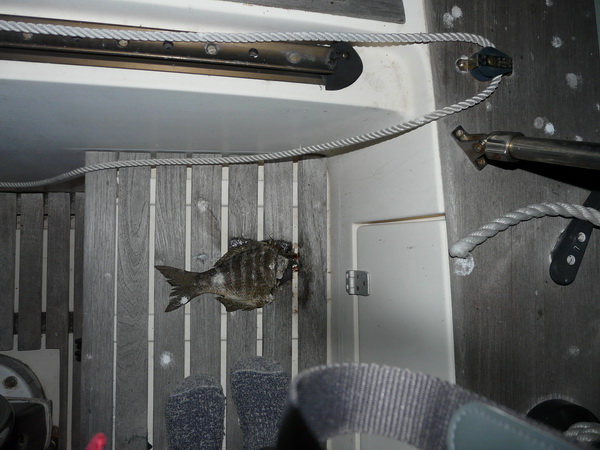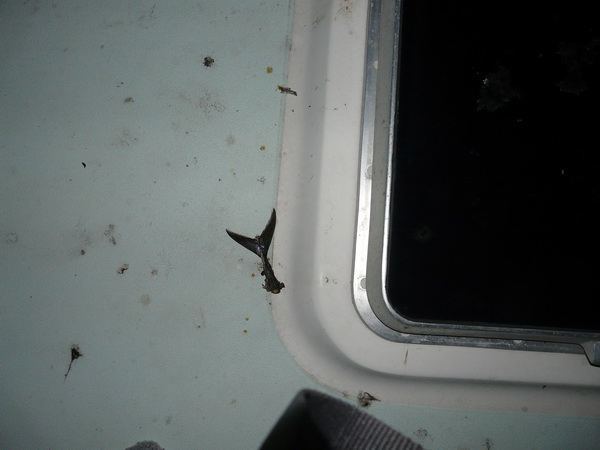Published in the Ocean Watch column, Honolulu Star-Advertiser © Susan Scott
July 25, 2011
Last week, while preparing my sailboat for Mexico’s hurricane season, I heard a squeaky, high-pitched bird sound, sort of a cross between a mynah and sparrow. This, though, was no songbird. I looked up just in time to see a diving raptor crash into the water. A second later it lifted off with a fish wiggling in its talons. A second raptor circled above, both big birds calling in little-bird voices.
 Photo by Susan Scott
Photo by Susan Scott
Ospreys often perch on mast tops for mealtime.
The fishers were ospreys, also called fish hawks, sea eagles or sea hawks. Neighboring sailors told me these two birds were parent and fledgling from a nearby nest.
This was bad news. Much as I love seabirds, ospreys are not welcome on my boat.
With a body length of 25 inches and a wingspan of 6 feet, ospreys are smaller than Laysan albatrosses but larger than the brown booby birds that rest on our channels’ navigation buoys. Ospreys are strictly fish eaters but not strictly seabirds. Any salt, fresh or brackish body of water will do, as long as the water is shallow and fish are ample.
Ospreys might not be seabirds technically, but they can fish with the best of them — with their toes. The bird circles high, often hovering as it calculates where the fish will be by the time the bird hits the water.
After a plunge dive with wings partially tucked, the osprey turns feet down and snatches the fish with impressive talons, four on each foot. The front two talons curve back, and the rear two curve forward, enabling the bird to pierce the fish in eight places. Barbs on the foot pads help secure the fish.
Once airborne, ospreys turn their captured fish head-first to fly in the most aerodynamic fashion. But if the bird catches a fish too big to carry, and the talons are deeply embedded in its flesh, a diving fish can drown the predator.
Like bald eagle nests, osprey nests are impressive structures. I once found an osprey nest on an island peak in the Sea of Cortez (Gulf of California). The nest was vacant (angry parents would have scared me away long before I arrived), giving me a leisurely look inside.
The 4-foot-wide nest was surprisingly colorful, containing a blue plastic bag, orange sea fans, yellow rope and pearly seashells all interwoven among sticks. Some materials had tumbled down the steep sides of the rock bearing the nest, so I picked up the osprey furnishings and laid them inside for the next occupants to arrange. Ospreys reuse nests year after year.
When they have chicks to feed, osprey couples carry their catches to the nest, ripping the fish to pieces with sharp, hooked beaks. When not raising a family, the birds look for a high, safe place to stand while they tear up their fish.
 Partially eaten fish dropped by an osprey on Susan’s boat Honu.
Partially eaten fish dropped by an osprey on Susan’s boat Honu.
And that’s my problem with ospreys. The birds view mast tops as perfect dining platforms, and their table manners are atrocious. I once returned to my boat in a Mexican marina, and the deck looked like the trash bin of a fish market.
Ospreys can visit. Just, please, not for dinner.
 Remains of an osprey meal on the deck of Susan’s boat Honu.
Remains of an osprey meal on the deck of Susan’s boat Honu.